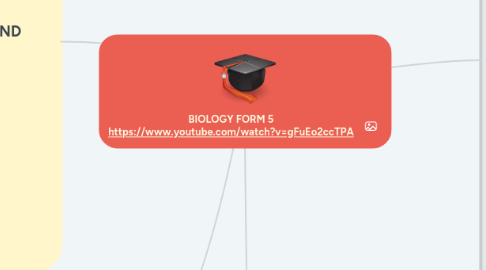
1. CHAPTER 2: LOCOMOTION AND SUPPORT
1.1. PROFORMA : 2.4 / 2.5 / 2.6
1.2. Learning Objectives
1.2.1. 2.3 Understanding support in plants
1.3. Learning Activities
1.3.1. a) study the adaptations for support (aerenchyma and air sacs) in floating aquatic plants, e.g. water hyacinth,
1.3.2. b) study prepared slides of cross sections of old stems to identify tissue that help in support
1.3.3. c) investigate how support in herbaceous plant, e.g. spinach and balsam, is achieved without woody tissue.
1.4. Learning Outcomes
1.4.1. Explain the necessity for support in plants
1.4.2. Explain how support is achieved in aquatic plants
1.4.3. Explain how support in terrestrial plants are achieved through tissue modifications
2. PROFORMA 9.0 : INTRODUCTION TO MOLECULAR BIOLOGY
3. CHAPTER 6 : VARIATION
3.1. PROFORMA 9.7 MUTATIONS
3.1.1. Learning Objectives
3.1.1.1. 6.2 Understanding the causes of variation
3.1.2. Learning Activities
3.1.2.1. Discuss the following: a) chromosomal mutation b) gene mutation
3.1.2.2. Discuss examples of mutation and mutagens
3.1.2.3. Discuss the importance of variation in the survival of a species
3.1.3. Learning Outcomes
3.1.3.1. Explain mutation
3.1.3.2. Explain the importance of variation in the survival of a species
4. PROFORMA 2.0 : LEVELS OF ORGANIZATION
5. THANK YOU FOR WATCHING
6. CHAPTER 1 : TRANSPORT
6.1. PROFORMA 8.3 : CELL TRANSPORT
6.1.1. Learning Objectives
6.1.1.1. 1.1 Understanding the importance of having a transport system in some multicellular organisms
6.2. Learning Activities
6.2.1. a) correlate different sizes of cubes to total surface area / volume (TSA/V) ratio b) discuss how the (TSA/V) ratio affects the movement of solutes to the interior of cubes c) relate the outcome of a) and b) to the problem faced by multicellular organisms in getting cell requirements to the cells in the interior of the organisms d) suggest ways to improve the movement of solutes to the interior of cubes without changing the size of cubes e) explain why there is a need for a transport system in some multicellular organisms
6.3. Learning Outcome
6.3.1. Identify the problem that could be faced by multicellular organisms in obtaining their cellular requirements and getting rid of their waste products
6.3.2. Suggest how the problem is overcome in multicellular organisms
7. CHAPTER 5 : INHERITANCE
7.1. PROFORMA 9.1/9.2/9.8/9.9
7.1.1. Learning Objectives
7.1.1.1. 1.3 Understanding genes and chromosomes
7.1.2. Learning Activities
7.1.2.1. Construct a model of DNA and discuss the following: a) structure of nucleotides b) structure of polynucleotides c) double helix structure of DNA
7.1.3. Learning Outcomes
7.1.3.1. Describe the structure of deoxyribonucleic acid (DNA)
7.2. PROFORMA 9.3: GENE EXPRESSIONS
7.2.1. Learning Objectives
7.2.1.1. 1.1 Synthesising the concept of inheritance based on Mendel’s experiment
7.2.2. Learning Activities
7.2.2.1. Study diagrams showing the results of Mendel’s monohybrid cross experiment
7.2.3. Learning Outcomes
7.2.3.1. Explain genes and alleles
